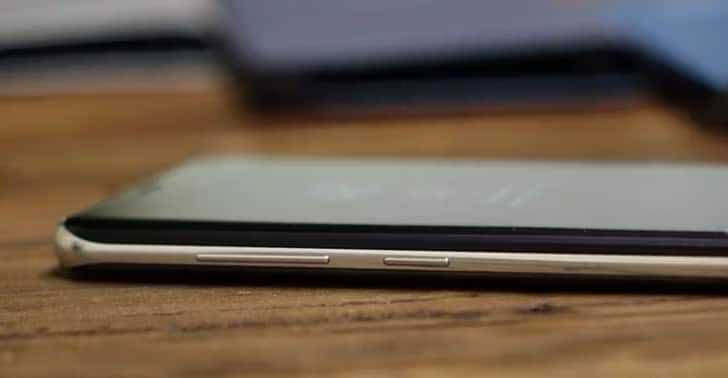The Galaxy S series has gone through 15 generations. It has changed a lot since its introduction in 2010, especially with the presence of Ultra models from 2020. While technology with the Galaxy S series has always moved forward, some features have changed. left behind. The Galaxy S24 is a great phone. However, it is not wrong that they are criticized for being too boring due to the lack of variation. For the Galaxy S25 series, I hope Samsung will innovate again. To do so, I think Samsung should look for inspiration from the past.
Galaxy S9 and Galaxy S10 series: Variable aperture lens
It can be said that Galaxy S9 and Galaxy S10 are two of Samsung's best phone lines. It's not hard to see why. The Galaxy S9 series took the design of the very popular Galaxy S8 series but changed the location of the fingerprint scanner. Meanwhile, the Infinity-O display and ultrasonic fingerprint scanner came to the masses with the Galaxy S10 series.
Both phones have main lenses that can change the aperture. They can switch between ƒ/1.5 and ƒ/2.4 depending on lighting conditions. The result is improved output when the sun is out but detail is still enhanced in perfect lighting conditions. Unfortunately, this feature has been discontinued. Samsung switched to using high-resolution sensors, starting with 108MP with the Galaxy S20 Ultra and 200MP with the Galaxy S23 Ultra.
I'd like to see this feature revived. Additionally, the Galaxy S9 and Galaxy S10 series can only change between two fixed levels: ƒ/1.5 and ƒ/2.4, it would be great if Samsung could remove this limit.
The Galaxy S24 Ultra's 200MP sensor comes with a lens with an aperture of ƒ/1.7 – a middle-of-the-road choice between detail and brightness. It is still unclear whether the shutter error appearing on Ultra phones of the Galaxy S series is a hardware or software error. However, having a wider aperture certainly helps a lot.
Imagine if the Galaxy S25 Ultra could change between three apertures: ƒ/1.4; ƒ/1.7 and ƒ/2.4. Samsung has also promoted Expert RAW to the public in recent years. Imagine how creative we could be with a depth of field if we had manual access to the aperture in Expert RAW.
From Galaxy S to Galaxy S5 and Galaxy S7 to Galaxy S20 series: microSD card tray

The microSD card tray is long dead. Currently, it's difficult to find outside-of-budget models or the camera-focused Sony Xperia line. Samsung has removed the microSD card tray from high-end Galaxy lines twice. The Galaxy S6 series does not support a microSD card tray. However, the company had to turn around and equip it with the Galaxy S7 series due to backlash from users. Samsung tried again with the Galaxy S21 series and succeeded.
It's not difficult to understand why. Nowadays, most of us have a stable network connection to stream music and movies. Storage capacity has also increased a lot. The original Galaxy S model only had 4GB or 8GB of storage. Meanwhile, the Galaxy S24 has at least 128GG and the Galaxy S24+ and Galaxy S24 Ultra have at least 256GB. Of course, for the Galaxy S24 Ultra, you can spend more money to increase the storage capacity to 1TB.
However, internal memory is not perfect. You cannot upgrade it. So while 256GB may be enough for you now, you may need to expand your storage in the future. Additionally, if you're traveling or going somewhere without a stable network connection, you may want more storage space for photos, music, and movies. The microSD card tray gives us the flexibility that internal memory cannot offer.
In addition, backup and restore will also be much simpler. Samsung added the option to back up to external storage for Galaxy devices last year. Therefore, you can back up your entire Galaxy device to a microSD card for later restoration via Smart Switch. This is a great feature for budget Galaxy phones that still have microSD card trays. However, those who bought high-end Galaxy phones were left out.
From Galaxy S8 to Galaxy S10 series: Bibxy key

At first, the Bixby key was not well received because it couldn't do anything other than summon Bixby - a terrible voice assistant. However, things changed quite a bit when the Galaxy S10 series was released. Samsung provides two actions for the Bixby key: double press and single press: Bixby must be assigned an action. However, for the remaining actions, you can assign them whatever you like. There are also third-party apps that let you customize both actions.
By 2024, a lot has changed. First, Bixby isn't as bad as it used to be. Besides, Samsung also allows you to customize the Side key to open Google Assistant or any other function or application, as long as you use Good Lock.
Having an extra hard key is very convenient. I like to tap once to take a photo and tap and hold to focus when the Camera app is on. With the Action button added to the iPhone 15 Pro line, it wouldn't be surprising if the Bixby key was revived.
Galaxy S2 series: Smart rotation
The history of this feature is unclear. Through software updates, Smart Rotation appeared on the Galaxy S2 series despite being introduced with the Galaxy S3 or Galaxy S4. I'm not sure which is the last Galaxy S series to have this feature. I switched to a Google phone after the Galaxy S4. But I know for sure that my Galaxy S10+ doesn't have Smart Rotation. Because it hasn't received much attention, it's unclear when this feature will disappear.
Smart rotation is great. If you turn on Auto-rotate, each time your phone rotates to landscape mode, it quickly activates the camera and checks the direction of your eyes. The screen will only rotate when the phone detects that your eyes are oriented differently from the device. Otherwise, the phone will assume you're lying down with the device and keep everything as it is.
A simple but effective feature. Android 9 added a manual rotation key if Auto-rotate is disabled. However, it is not as convenient. I've used phones from Google, Samsung, Motorola, etc. and sometimes that key won't appear until I rotate the phone again. In addition, the key size is quite small, so it is easy to miss.
Of course, Smart Rotate isn't perfect, especially in low light. However, perhaps reviving another feature could overcome this weakness.
Galaxy Note 7 series Galaxy S8 to Galaxy S9: Iris scanning
Besides fingerprint scanners, the Galaxy S8 and Galaxy S9 series also have iris scanning capabilities. When you open your phone, it uses the camera (which should be in line with your eyes) to open the device. This is not the most convenient way to unlock your phone. However, it is not difficult to get used to this feature.
The iris scanner also has lighting problems. Our pupils dilate when it's dark, making recognition less accurate, especially when there's no light. However, technology has progressed a lot since the Galaxy S8 and Galaxy S9 series appeared. Current infrared iris scanners can operate in complete darkness. While I prefer the fingerprint scanner to facial recognition, there are many others who will be happy to see the return of the iris scanner. In addition, this could be the final piece of the puzzle to help the Smart Rotate feature work stably in the dark.
However, there are two things preventing Samsung from reviving this technology: cost and space. The Galaxy S10 series has eliminated the thick top and bottom screen bezels that the Galaxy S9 series has as well as punching holes in the screen to make room for the camera. I don't think the iris scanner will return unless Samsung figures out how to place it below the screen. The company is proud of the full-screen design of the current Galaxy S series and certainly does not want to sacrifice it for something else.
The Galaxy S25 series needs something special
I really like the Galaxy S24 Ultra. This is a durable and reliable phone model. However, its launch did not excite me at all. This is even reflected in Samsung's slogan. The company has promoted "the next big thing is here" in the past, something that is completely absent at the present time. Hopefully, the Galaxy S25 series will have something special to excite us next year.
 SamFw
SamFw

